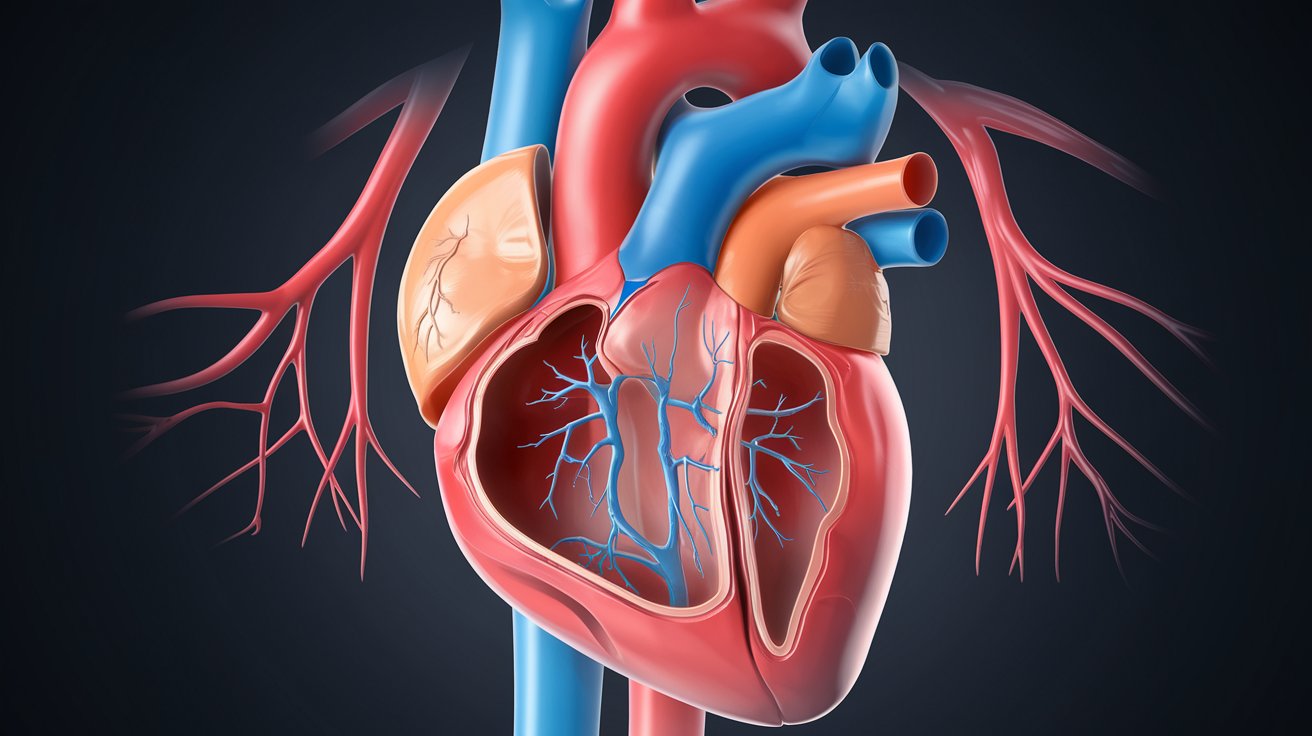
Complete Atrioventricular Canal (CAVC) is a congenital heart defect that affects the structure of the heart, leading to problems with blood flow. This condition involves a large hole in the center of the heart where the walls between the upper and lower chambers meet. CAVC can cause symptoms like difficulty breathing, poor weight gain, and frequent lung infections in infants. Treatment often requires surgery to close the hole and reconstruct the heart valves. Understanding CAVC is crucial for parents and caregivers of affected children. Here are 30 essential facts to help you grasp the complexities of this heart condition.
Key Takeaways:
- Complete Atrioventricular Canal (CAVC) is a serious heart defect present at birth, affecting the heart's structure and function. Early detection and proper treatment are crucial for a healthy life.
- Children with CAVC can lead healthy lives with timely surgery and ongoing care. Genetic and environmental factors play a role, and support resources are available for families dealing with this condition.
What is Complete Atrioventricular Canal (CAVC)?
Complete Atrioventricular Canal (CAVC) is a congenital heart defect that affects the structure of the heart. It involves a large hole in the center of the heart where the walls between the chambers should meet. This condition can lead to serious health issues if not treated properly.
-
CAVC is a congenital defect: This means it is present at birth. Babies are born with this heart condition, which can be detected through prenatal ultrasounds or after birth through symptoms.
-
Affects the heart's structure: The defect involves a large hole in the center of the heart, affecting the walls between the heart's chambers and the valves that control blood flow.
-
Common in Down syndrome: Approximately 45% of children with Down syndrome have some form of congenital heart defect, with CAVC being one of the most common.
Symptoms of Complete Atrioventricular Canal
Recognizing the symptoms of CAVC early can be crucial for timely treatment. Symptoms can vary depending on the severity of the defect.
-
Rapid breathing: Infants with CAVC often exhibit rapid or labored breathing due to the heart's inefficiency in pumping blood.
-
Poor weight gain: Babies may struggle to gain weight and grow at a normal rate because their bodies are working harder to pump blood.
-
Fatigue during feeding: Infants may tire quickly while feeding, leading to inadequate nutrition and slower growth.
Diagnosis of CAVC
Diagnosing CAVC involves several medical tests and procedures to confirm the presence and extent of the defect.
-
Echocardiogram: This ultrasound test uses sound waves to create images of the heart, helping doctors see the structure and function of the heart.
-
Chest X-ray: A chest X-ray can show an enlarged heart or fluid in the lungs, which are indicators of CAVC.
-
Electrocardiogram (ECG): This test records the electrical activity of the heart and can help identify abnormalities associated with CAVC.
Treatment Options for CAVC
Treatment for CAVC typically involves surgery to correct the defect and improve heart function.
-
Open-heart surgery: The most common treatment is open-heart surgery to close the hole in the heart and repair the valves.
-
Medications: Before surgery, medications may be prescribed to manage symptoms such as heart failure or high blood pressure.
-
Regular follow-ups: After surgery, regular follow-ups with a cardiologist are essential to monitor heart function and overall health.
Prognosis and Long-term Outlook
The long-term outlook for children with CAVC can vary, but many lead healthy lives with proper treatment and care.
-
Improved quality of life: With successful surgery, most children experience a significant improvement in their quality of life and can engage in normal activities.
-
Potential complications: Some children may face complications such as arrhythmias or valve problems, requiring additional treatment or surgeries.
-
Lifelong monitoring: Regular check-ups with a cardiologist are necessary to ensure the heart remains healthy and to address any issues promptly.
Genetic and Environmental Factors
Understanding the causes of CAVC can help in prevention and early detection.
-
Genetic predisposition: Certain genetic conditions, like Down syndrome, increase the risk of CAVC.
-
Environmental factors: Factors such as maternal diabetes, alcohol consumption during pregnancy, and certain medications can contribute to the development of CAVC.
-
Family history: A family history of congenital heart defects can also increase the likelihood of a baby being born with CAVC.
Support and Resources for Families
Families dealing with CAVC need support and resources to navigate the challenges of this condition.
-
Support groups: Joining support groups can provide emotional support and practical advice from other families facing similar challenges.
-
Educational resources: Access to educational materials can help families understand the condition and the treatment options available.
-
Financial assistance: Some organizations offer financial assistance to help cover the costs of medical care and surgeries.
Advances in Medical Research
Ongoing research continues to improve the diagnosis, treatment, and outcomes for children with CAVC.
-
Innovative surgical techniques: Advances in surgical techniques have improved the success rates and reduced recovery times for children undergoing CAVC repair.
-
Genetic research: Research into the genetic causes of CAVC is helping to identify at-risk pregnancies and develop preventive strategies.
-
Improved imaging technology: Advances in imaging technology, such as 3D echocardiography, provide clearer and more detailed views of the heart, aiding in accurate diagnosis and treatment planning.
Living with CAVC
Living with CAVC involves ongoing care and lifestyle adjustments to ensure a healthy and active life.
-
Healthy lifestyle: Encouraging a healthy lifestyle, including a balanced diet and regular exercise, is important for children with CAVC.
-
Regular medical check-ups: Lifelong monitoring by a cardiologist is essential to detect and manage any potential complications.
-
Emotional support: Providing emotional support and counseling can help children and their families cope with the challenges of living with a congenital heart defect.
Importance of Early Detection
Early detection of CAVC can significantly improve the outcomes and quality of life for affected children.
-
Prenatal screening: Prenatal ultrasounds can detect CAVC before birth, allowing for early intervention and planning.
-
Newborn screening: Routine newborn screenings can help identify CAVC early, leading to timely treatment and better outcomes.
-
Awareness and education: Raising awareness about CAVC and educating parents and healthcare providers can lead to earlier diagnosis and improved care for affected children.
Final Thoughts on Complete Atrioventricular Canal
Complete Atrioventricular Canal (CAVC) is a serious congenital heart defect that affects the heart's structure and function. Understanding its symptoms, causes, and treatment options can help those affected manage the condition better. Early diagnosis and medical intervention are crucial for improving the quality of life for patients. Advances in medical technology and surgical techniques have significantly increased the survival rates and outcomes for individuals with CAVC. Awareness and education about this condition can lead to better support systems for patients and their families. If you or someone you know is dealing with CAVC, consulting with a healthcare professional is essential for personalized care and treatment. Stay informed, seek support, and remember that medical advancements continue to offer hope for those living with CAVC.
Frequently Asked Questions
Was this page helpful?
Our commitment to delivering trustworthy and engaging content is at the heart of what we do. Each fact on our site is contributed by real users like you, bringing a wealth of diverse insights and information. To ensure the highest standards of accuracy and reliability, our dedicated editors meticulously review each submission. This process guarantees that the facts we share are not only fascinating but also credible. Trust in our commitment to quality and authenticity as you explore and learn with us.


